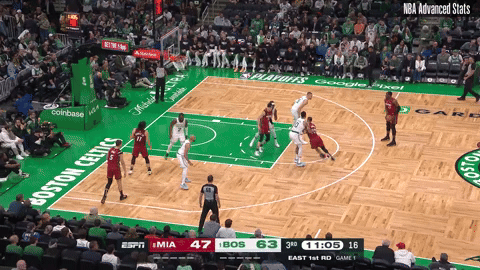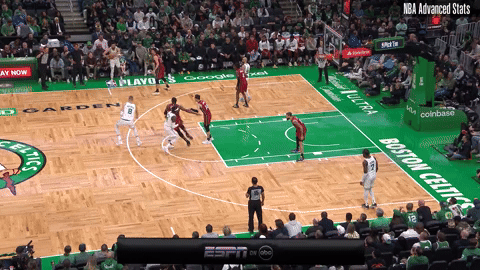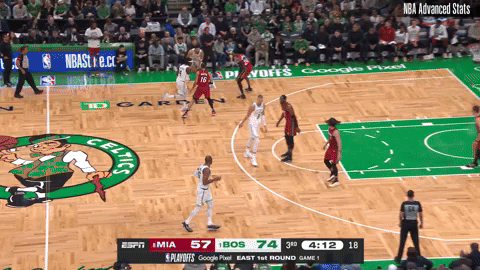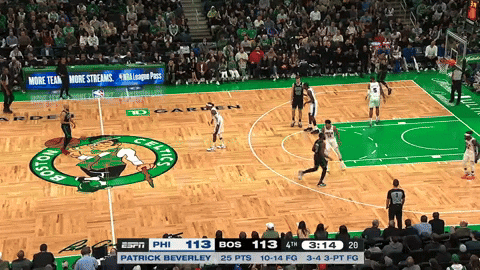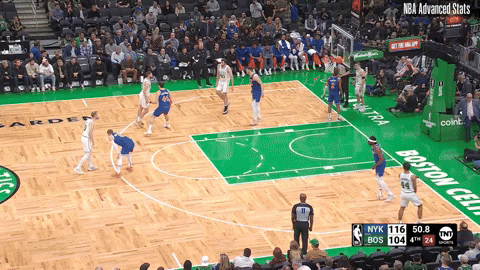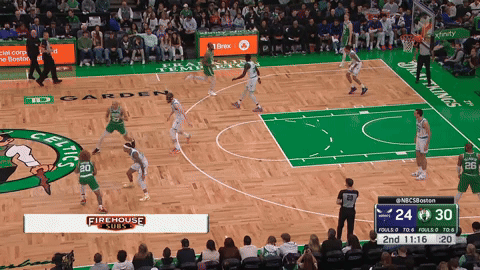Celtics Mailbag: 3-point shooting, adjustments, and the road ahead vs. miami
You asked, I answered (or at least, tried to)
Jimmy Butler won’t return to the Miami Heat’s rotation during their series against the Boston Celtics. At least, that’s the latest reporting from Shams Charania via FanDuel TV’s ‘Run it Back.’
“He is not gonna be back in this series,” Charania said. “This is a rehab that’s gonna go at least one month. It’s seriously remarkable to me that he played three quarters on this injury.”
Without Butler in the rotation, the Heat are sitting ducks. The Celtics have too much firepower. They’re the better defensive team. And they’re motivated to set the record straight after their game-seven loss in the Eastern Conference Finals last season. A game where Jayson Tatum went down with an injury early.
Butler is the Heat’s heartbeat. His postseason performances are what makes Erik Spoelstra’s team a threat. The Celtics should be looking to sweep (or Gentleman’s sweep) this series if Butler is genuinely going to be out of the rotation.
Miami is also missing Terry Rozier (neck) and Josh Richardson (shoulder). As I mentioned in the scouting report on Saturday, without those three guys, Tyler Herro has too much responsibility on his shoulders. Suddenly, he’s expected to be the primary ball-handler, play initiator, shot-creator, and the number one offensive option. That’s a lot on a player's shoulders two years removed from being the Sixth Man of the Year.
Jrue Holiday put the clamps on Holiday in game one to make matters worse for Miami. He locked him up like he’d been caught evading his taxes.
If Holiday keeps Herro under lock and key throughout the series, the Celtics will make short work of the Heat. Spoelstra’s team needs more on-ball creation. They can’t rely on elbow hand-offs and re-screen actions above the perimeter. They need someone to manipulate the defense and force the Celtics into rotation. That’s a hard task. Especially when you have Kristaps Porzingis anchoring the middle of the floor or Al Horford coming off the bench.
The Celtics can’t take their foot off the gas here. Get this series over and done with. Do it quickly. The fewer games against a Heat team that often flirts with the line of being over-aggressive, the better. Because sterner tests are around the corner.
Right now, that test projects to be the Cleveland Cavaliers, who are 2-0 up on the Orlando Magic in their first-round series. But that’s a concern for another day. Don’t worry—I’m in the lab, I’m watching those games, I’m collecting film—there will be time for this later.
For now, though, let’s dive into today’s mailbag!
Earlier today, I was sitting at my computer, thinking about what to write. Yes, the playoffs are here, and yes there’s a ton of stuff to cover. Yet, after mauling the Heat for three straight quarters, there’s a lot to write about but not a lot to say. I mean, the fourth quarter was more Boston losing focus than the Heat stumbling onto something that could develop into a building block for the coming games.
So, I shot out a quick thread asking for some mailbag questions. I appreciate you for coming up clutch with a fast turnaround!
One topic was heavily prevalent in your questions: the Celtics' overreliance on threes and what games will look like when those shots aren’t dropping. I’m going to try to answer those questions together…
Kein asked: “Possibly more on what happens when the threes don't fall in the next game, offensive spacing suffers and Miami's zone tightens up - how would that collapsing zone affect how we use Porzingis as a zonebuster at the nail?”
Chris Figee asked: “Hi Adam…my worry…the Celts beat the heat by hitting a record nr of threes in the playoffs …and we won by “only” 20 points difference…aren’t we too dependent on threes? If we bump into two dry games in which the threes just don’t fall…then we are vulnerable? Seeing the game, it felt like the team was continuously looking to see three-point opportunities…and not a lot of other plays?”
Brian Aquino asked: “Do you think these Celtics have the right mindset when the game gets tough? There will at least be 1/2 games in each series when the three isn't falling and I'm curious whether they'd opt for simply going downhill and driving to the basket/posting up.”
I’ve taken three key points from the trio of questions above.
How will Boston attack Miami’s zone if the 3s aren’t falling and spacing suffers
Generally speaking, spacing isn’t affected by a difficult shooting night. Perimeter scorers are always threats, not just when their shot is falling. Defenses know this and respect their opponent's ability. For instance, Jayson Tatum was 1-of-8 from deep on Sunday, but not once did we see the Heat’s defense sag off him from deep.
This possession was Tatum’s final three of the night against Miami. He had missed his previous six attempts. Jaime Jaquez Jr. still chases him around the hand-off and tries to stay glued to Tatum’s hip. Even when Tatum creates space for himself, Jaquez scrambles to contest the shot.
A fair pushback would be, 'Well yeah, of course, they’re going to stick with an All-NBA threat, but what about when the role players are struggling?’ — That’s fair pushback. That’s why the clip above shows Al Horford taking and missing his third consecutive look from deep.
Again, Jaquez is tasked with impacting the shot, and again, he fights over the Porzingis screen to close the space and register a shot contest on a three that ends up clanking off the back iron.
Teams have 82 games worth of data to work with. I find it difficult to imagine players coming into games knowing what everyone on the opposing team is shooting from each level. Instead, they likely know ‘this team shoots a bunch of threes,’ or ‘Holiday is cooking from the corner this season,’ or ‘Derrick White likes to drive close-outs.’
It’s those finer details that I would imagine drive defense principles. With that in mind, I doubt a stinker from deep does much to change the spacing on the floor…At least in terms of one game — after all, it only takes one made shot to get a team going.
So, if the spacing remains unchanged, the way Boston would look to attack the zone would likely remain the same, too. The bigger difference comes in the shots the team starts hunting, leading us to the next part of these questions.
What happens when Boston’s perimeter offense is having an off-night?
There are two outcomes, right? Either the Celtics adjust and start attacking the rim and working in the mid-range, or they double down on jacking shots from the perimeter and shoot themselves out of a game.
After last season, we’re all traumatized to expect the latter. Yet, for the majority of this year, the Celtics have done a good job of recognizing when their collective shot isn’t there and adjusting to pressure the rim and work out of the post. Of course, you still want a healthy dose of threes — you’ve got to keep the defense honest, after all.
It’s all about finding the right balance and being humble enough to understand when it’s not your night from specific spots on the floor. Most importantly, though, they’ve got to keep their composure. A primary development that hasn’t been discussed enough this season is how the Celtics rarely live by their makes and misses this season.
In previous years, poor perimeter shooting would bleed into poor effort on defense or poor execution of offensive actions designed to create interior offense. Part of that is why Ime Udoka was successful in his maiden season with the team — he managed to separate the effort level on offense from the effort level on defense.
Mazzulla has built on that.
This Celtics team is locked in regardless of whether their shot is falling or not. They play stifling defense, iterate through different coverages, and play high-tempo offense that allows for early offensive actions to be successful. As long as they keep doing that and adjust when the time calls for it, there should be no reason for this team to stagnate against the Heat.
Were the Celtics over-reliant from deep in game 1? Why didn’t they get into their playbook?
This is a tough one. Were they over-reliant, or did they find something that worked and kept with it because the Heat failed to adjust adequately enough to stop them?
Throughout the game, the Celtics took a total of 82 shots. 49 of them were from the perimeter. That means 59.8% of their offense was from 3-point range. Compared to the Celtics season average that’s a 16.1% increase in perimeter shots. That’s not an egregious increase, but it’s certainly a noticeable one.
Part of that shot profile is down to how the Heat play defense. Here’s a snippet from the scouting report I wrote on Saturday.
“The Heat like to bait teams into taking a lot of threes. They rank among the worst teams in the league for threes allowed per game but are top-five in defensive field goal percentage on the perimeter. They set a consistent trap, and teams fall right into it. Part of that is likely due to Miami's success in limiting rim attempts, ranking second in the league for shots allowed at the rim per 100.
Interestingly, the Heat’s biggest weapon on offense is also their primary weakness on defense: the mid-range. They’re 22nd in the league for attempts allowed and 29th in the league for defensive field goal percentage.
Clearly, the Heat’s focus on impacting perimeter jumpers and removing the rim is leaving the mid-range area wide open. For most teams, not being able to play “Morey Ball” is a death knell. For Boston, it’s an invitation to get into their post-offense and lean into some of the screening actions they’ve been cooking teams with all season.”
Given how the Heat encourages teams to shoot from the perimeter, it makes sense that the Celtics tested Miami’s resolve. It’s one thing to keep baiting those shots when you impact the release and limit your opponents’ conversion rate. It’s another when those shots drop at a mouth-watering clip, and you’re forced to try and adjust in search of a solution.
It’s hard to say whether the Celtics were over-reliant in game one, primarily because that’s the trap Miami likes to set, and Boston found success there early and often. We will learn more about their overall shot profile as the series continues, especially if they endure a barren stretch during a game.
That leads me to the second part of your question…Why did the Celtics seldom run any designed actions — this also ties into the next question I have too…
Pierce Ellinwood asked: “The C's were getting great opportunities from 3 in game 1 and buried their shots, but you know Spoelstra is going to make good adjustments and I imagine making things tougher behind the arc will be one of their goals. Brown had an efficient game 1 but the offense didn't flow through him (and didn't need to). Could we be looking at a heavy JB game with his ability to establish the drive and then thrive in the midrange? What other changes might you expect out of Spoelstra and what potential counters do you see coming from Mazzulla?”
Did Mazzulla keep his playbook closed?
For the most part, yes, he did. The Celtics ran a read-and-react offense for the majority of the game, taking what the Heat gave them — which, as we now know, was a ton of threes.
Outside of some Horns’ actions, the Celtics seldom went into any of their primary offensive series. I would expect that changes as the series continues and Spoelstra’s team adjusts on the defensive end.
I know your question was about what plays the Celtics could run if their threes aren’t falling, so I’ll try to give some ideas as best I can.
It all starts with getting Porzingis, Tatum or Brown in the mid-post. That can be via wedge screens or slice screens — both result in shuffle cuts to the block, and both allow Boston to get a body into the mid-range and to work their post offense while forcing Miami to either help off the corners, out from the basket or to send someone from the perimeter.
We looked at shuffle cuts on Saturday, if you missed it, you can check it out here.
Beat. The. Heat.
Beyond running shuffle actions to blow open a zone or force Miami’s defense to rotate, I’m expecting to see some of the following actions before the series is over.
“Chest”
A chest action is a ghost screen into a flare screen. The Celtics have run this play a bunch for Jaylen Brown this season. It helps create space on the catch with the defense trailing or fighting over the flare screen. That gives Brown multiple options and allows him to lean into his role of being a primary offensive option.
If the Heat are hunkering down on the perimeter or throwing out a tough zone, this could be a way to get Brown driving and forcing a collapse or shooting an uncontested catch-and-shoot three.
“Oklahoma”
“Oklahoma” is a stagger screen where the first screener receives a screen from the second screener. Boston has toyed with multiple variations of this set, both in the half-court and in transition. It puts the defense in rotation. The second screener can slip, roll, or pop. The ball-handler is usually dragging his dribble to stretch the defense. Lots of ways to create opening or bust open a persistent defense.
“Ram”
The Udoka special. The Celtics have been running Ram actions for a few years now. The clip above is a “Ram angle” as the action takes place for a corner shooter to become the screener. Still, it’s always a reliable way to create mismatches and open up driving lanes or generate shooting pockets.
The Celtics Chronicle is a reader-supported publication. To receive new posts and support my work, consider becoming a free or paid subscriber.
That wraps up today’s mailbag.
There’s one question I didn’t get to, which I plan on answering tomorrow. I’ve also got more thoughts on some aspects of Boston’s potential game plan to counter the Heat’s defensive adjustments, which will be shared in tomorrow’s newsletter for full subscribers.
If you want to receive that post and aren’t already a paid subscriber, you can take advantage of a 7-day free trial by clicking on the button below.


